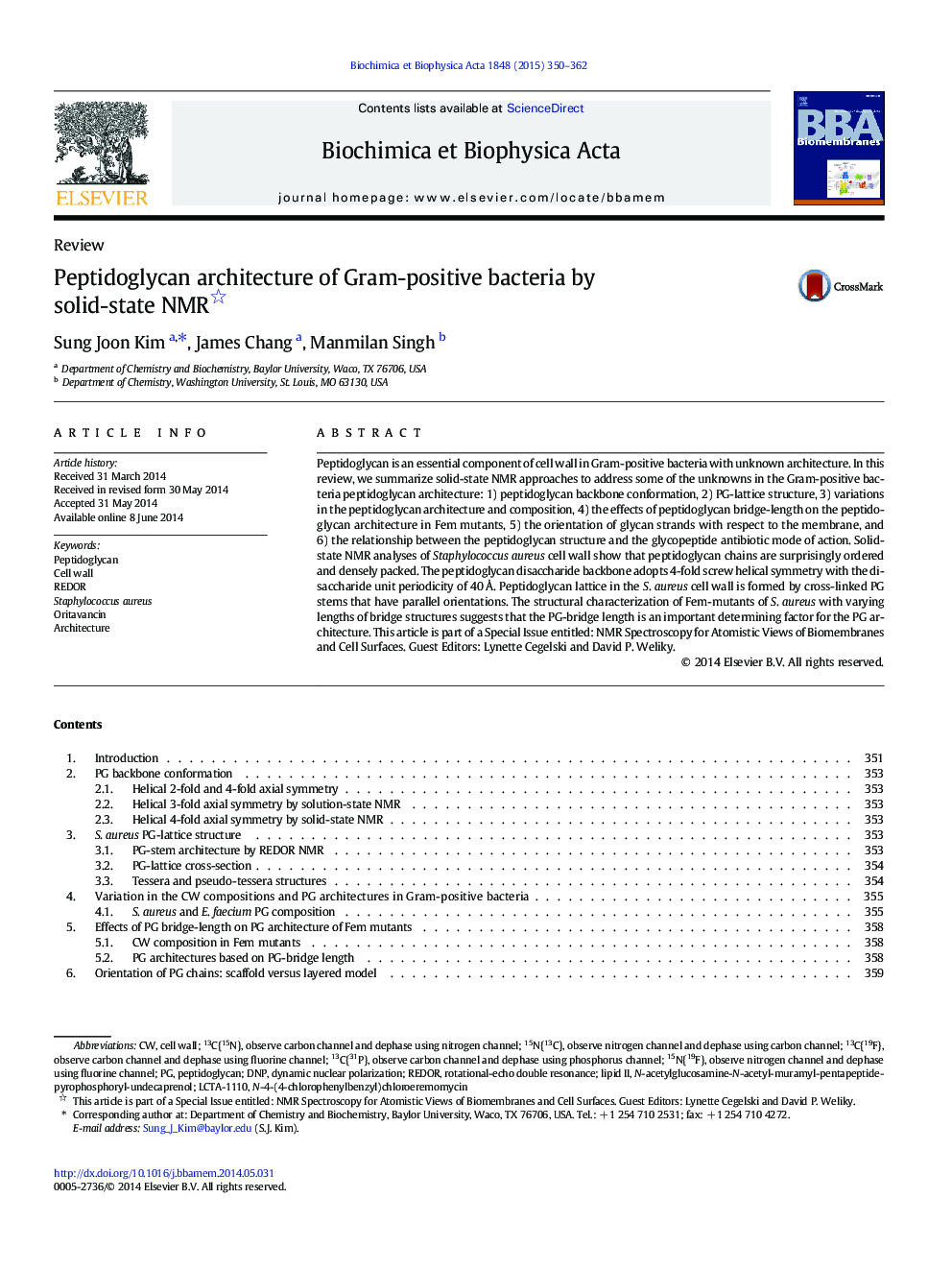| کد مقاله | کد نشریه | سال انتشار | مقاله انگلیسی | نسخه تمام متن |
|---|---|---|---|---|
| 1944062 | 1053175 | 2015 | 13 صفحه PDF | دانلود رایگان |

• S. aureus peptidoglycan disaccharide adopts 4-fold screw helical symmetry.
• The disaccharide unit has a periodicity of 40 Å.
• The cross-linked peptidoglycan stems have parallel orientation.
• Peptidoglycan bridge length is a determining factor for the architecture.
Peptidoglycan is an essential component of cell wall in Gram-positive bacteria with unknown architecture. In this review, we summarize solid-state NMR approaches to address some of the unknowns in the Gram-positive bacteria peptidoglycan architecture: 1) peptidoglycan backbone conformation, 2) PG-lattice structure, 3) variations in the peptidoglycan architecture and composition, 4) the effects of peptidoglycan bridge-length on the peptidoglycan architecture in Fem mutants, 5) the orientation of glycan strands with respect to the membrane, and 6) the relationship between the peptidoglycan structure and the glycopeptide antibiotic mode of action. Solid-state NMR analyses of Staphylococcus aureus cell wall show that peptidoglycan chains are surprisingly ordered and densely packed. The peptidoglycan disaccharide backbone adopts 4-fold screw helical symmetry with the disaccharide unit periodicity of 40 Å. Peptidoglycan lattice in the S. aureus cell wall is formed by cross-linked PG stems that have parallel orientations. The structural characterization of Fem-mutants of S. aureus with varying lengths of bridge structures suggests that the PG-bridge length is an important determining factor for the PG architecture. This article is part of a Special Issue entitled: NMR Spectroscopy for Atomistic Views of Biomembranes and Cell Surfaces. Guest Editors: Lynette Cegelski and David P. Weliky.
Graphic abstractStaphylococcus aureus peptidoglycan architecture by solid-state NMR.Figure optionsDownload high-quality image (299 K)Download as PowerPoint slide
Journal: Biochimica et Biophysica Acta (BBA) - Biomembranes - Volume 1848, Issue 1, Part B, January 2015, Pages 350–362